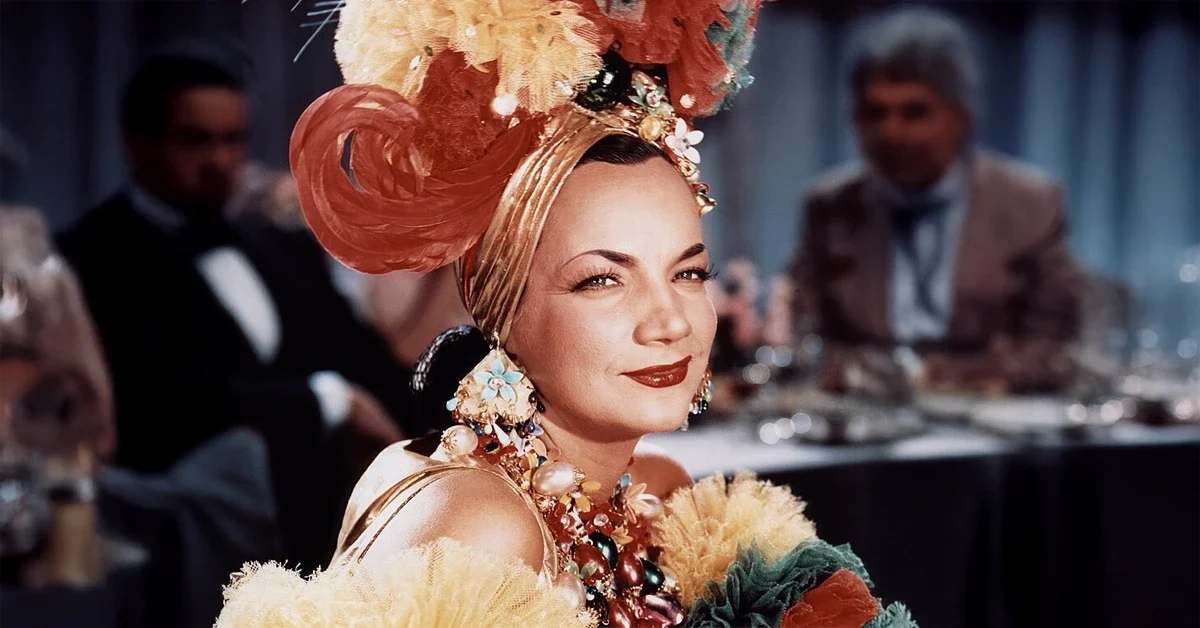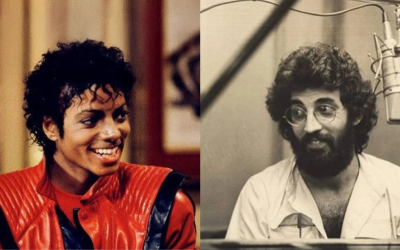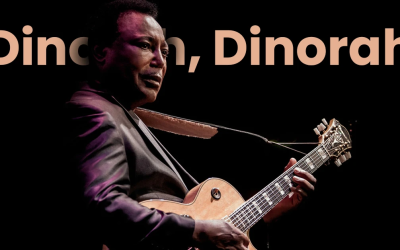When you think of Carmen Miranda Samba, what image comes to mind? Perhaps a vibrant woman with a towering fruit turban, singing and dancing with infectious energy. She was, without a doubt, Brazil’s first global superstar, captivating audiences in Hollywood and on Broadway. But her rise to international fame also tells a complex story about Brazilian music history, cultural representation, and how a nation’s rich artistic heritage can be filtered and reshaped for global consumption.
This article delves into the fascinating, often paradoxical, narrative of Carmen Miranda, exploring how she became the face of samba to the world, and why understanding this phenomenon is crucial for appreciating the true diversity of Brazilian music.
The Rise of the “Brazilian Bombshell”
Born Maria do Carmo Miranda da Cunha in Portugal in 1909, Carmen Miranda immigrated to Brazil as a child. She began her career as a singer in Rio de Janeiro, quickly gaining popularity for her unique vocal style and charismatic stage presence. By the late 1930s, she was a sensation in Brazil, starring in films and recording hit songs. Her distinctive costumes, often featuring elaborate fruit headpieces, became her signature.
Her big break came in 1939 when Broadway producer Lee Shubert discovered her performing in a Rio casino. Shubert, recognizing her immense talent and marketability, brought her to New York. Her Broadway debut in “The Streets of Paris” was an instant success, leading to a lucrative contract with 20th Century Fox. From 1940 to 1953, Carmen Miranda starred in numerous Hollywood musicals, becoming one of the highest-paid entertainers in the United States.
The Good Neighbor Policy and Hollywood’s Brazil
Carmen Miranda’s ascent coincided with a specific geopolitical strategy: the Good Neighbor Policy. Initiated by President Franklin D. Roosevelt in the 1930s, this policy aimed to improve diplomatic relations and foster cultural exchange between the United States and Latin American countries. The goal was to counter growing Axis influence in the region during World War II.
To facilitate this, the Office of the Coordinator of Inter-American Affairs (OCIAA) was established, headed by Nelson Rockefeller. The OCIAA actively promoted cultural products, including films and music, that presented a positive, albeit often simplified and idealized, image of Latin America. Carmen Miranda, with her vibrant persona and seemingly exotic appeal, became a perfect ambassador for this initiative.
Hollywood, eager to support the war effort and tap into new markets, embraced her. Her films, such as “Down Argentine Way” (1940) and “The Gang’s All Here” (1943), showcased a colorful, musical, and seemingly harmonious Brazil. However, this portrayal was often a caricature, reducing a vast and complex nation to a collection of stereotypes. The “Brazilian Bombshell” became a symbol, but one carefully curated to fit American perceptions and political objectives.
This commercial and political alignment played a significant role in shaping the global image of Hollywood Brazil.
Samba: The Heartbeat of a Nation, Whitewashed for the World
While Carmen Miranda was undeniably a talented performer, her representation of samba, and Brazilian culture in general, was a filtered version. To understand why this matters, we must look at the true origins of samba.
Samba is far more than just a dance or a musical genre; it is a profound cultural expression born from the resilience and creativity of enslaved Africans and their descendants in Brazil. Its roots lie in the “samba” gatherings and celebrations held by Black communities, particularly in Bahia, Brazil’s northeastern state, long before the abolition of slavery in 1888. These gatherings were vital spaces for cultural preservation, spiritual expression, and community building amidst brutal oppression.
After abolition, many freed slaves migrated to Rio de Janeiro, bringing their traditions with them. Samba flourished in the city’s favelas and working-class neighborhoods, often in the face of persecution from authorities who viewed African-influenced cultural practices as subversive or immoral. Figures like Tia Ciata, a revered matriarch and spiritual leader, played a pivotal role in nurturing and protecting samba in her home, which became a hub for musicians and composers. It was in this vibrant, clandestine environment that the first recorded samba, “Pelo Telefone,” composed by Donga, emerged in 1917.
The poet Vinicius de Moraes beautifully captures this essence in “Samba da Benção”:
Porque o samba nasceu lá na Bahia
E se hoje ele é branco na poesia
Se hoje ele é branco na poesia
Ele é negro demais no coração”*
(Translation: “Because samba was born in Bahia / And if today it’s white in poetry / if today it’s white in poetry / It’s still too Black at heart.”)
This verse encapsulates the core issue: while samba’s origins are unequivocally Black and deeply rooted in Afro-Brazilian traditions, its global presentation, largely through figures like Carmen Miranda, underwent a process of “whitening.” Her fair skin and European features made her a more palatable and marketable figure for American audiences of the era, who were often uncomfortable with overt Black cultural expressions. The raw, authentic, and often subversive spirit of samba was polished and packaged into a more sanitized, exotic spectacle.
The Invisible Barriers: Race, Economics, and Representation
The phenomenon of cultural representation through a “whitened” lens extends beyond Carmen Miranda. Even today, globally recognized Brazilian artists often do not reflect the country’s true racial and economic diversity. Genres like Sertanejo, dominated by white artists, receive massive investment and global promotion, while Black-rooted genres like Funk Carioca, despite their immense popularity within Brazil, struggle for equitable international recognition. When they do break through, it’s often through artists who, like Anitta, are white, despite the genre’s origins in Black favela communities.
This isn’t a criticism of the artists themselves, but rather a reflection of systemic issues:
- Racism: Historically and presently, racism makes it harder for Black artists to access resources, funding, and platforms necessary for global success.
- Economic Inequality: The arts require time, resources, and support. For communities struggling with basic needs, pursuing an artistic career is an even greater challenge.
- Gatekeepers: Entertainment industries, both within Brazil and internationally, often prioritize what they perceive as commercially viable, which historically has meant favoring lighter-skinned artists.
Carmen Miranda, despite her immense talent and genuine love for Brazil, became a product of this system. She was the face the market wanted to sell, not necessarily the true face of the culture she represented. Figures like Elza Soares, a phenomenal Black Brazilian singer whose legacy is immense, never received the same international spotlight because they didn’t fit the mold of what was deemed marketable.
Carmen Miranda’s Enduring Legacy and What It Means Today
Carmen Miranda’s legacy is complex. On one hand, she undeniably put Brazil on the global map, introducing millions to its music and vibrant culture. She was a trailblazer, a powerful woman who achieved unprecedented international stardom. Her energy and unique style continue to inspire artists and designers worldwide.
On the other hand, her story serves as a powerful reminder of how global perceptions of culture can be shaped by commercial interests, political agendas, and racial biases. The “Carmen Miranda Samba” image, while iconic, inadvertently obscured the deeper, richer, and more diverse reality of Brazilian music, particularly its profound African roots.
Understanding this history is vital. It encourages us to look beyond the surface, to question the narratives presented to us, and to actively seek out the authentic voices and stories that have historically been marginalized. The true power of Brazilian music lies in its incredible diversity, a tapestry woven from countless threads of different cultures, races, and regions.
As you continue your journey through Brazilian music, remember to explore beyond the familiar. Seek out the artists, genres, and stories that challenge preconceived notions and reveal the full, vibrant spectrum of this extraordinary musical heritage.
References:
Office of the Coordinator of Inter-American Affairs (OCIAA) and Good Neighbor Policy:
- “Good Neighbor policy.” Wikipedia. en.wikipedia.org
- “Office of the Coordinator of Inter-American Affairs.” Wikipedia. en.wikipedia.org
Samba History (Tia Ciata, Donga, “Pelo Telefone”):
- “Pelo Telefone.” Wikipedia. en.wikipedia.org
- “Tia Ciata.” Wikipedia. en.wikipedia.org
- “Samba: From Bahia to Rio de Janeiro.” Fundação Joaquim Nabuco. pesquisaescolar.fundaj.gov.br
Carmen Miranda Biography/Analysis:
- Carmen Miranda biographical sources and cultural analysis materials from academic institutions and cultural organizations provide additional context on her career and cultural impact.





